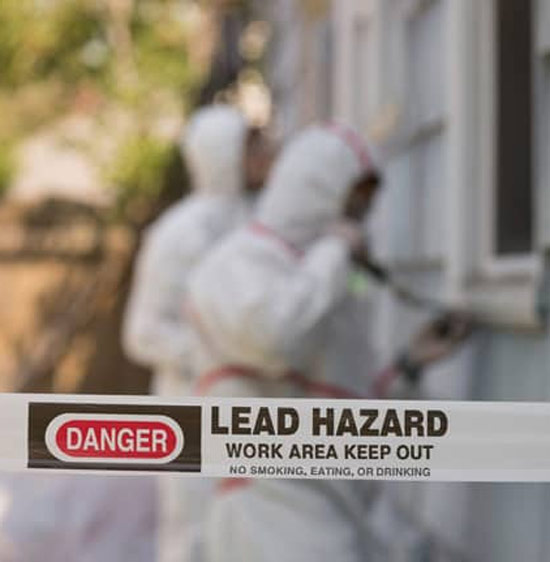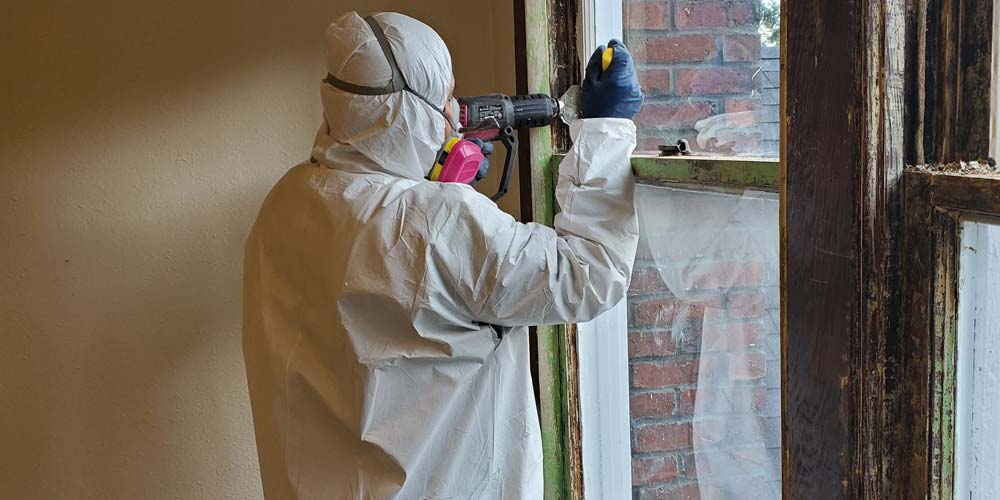Step-by-Step Refine for Successful Lead Infraction Remediation
Resolving lead offenses requires a meticulous and structured method to guarantee both safety and security and governing compliance. The journey begins with the exact discovery and assessment of contamination sources, utilizing advanced diagnostic devices. Following this, adherence to federal and state laws is critical to creating an efficient removal strategy. Such a strategy must information the certain approaches and timelines for activity. The actual remediation needs knowledgeable personnel to implement these plans while purely following security procedures. But what takes place after the remediation is finished? The answer hinges on comprehending the important post-remediation approaches that ensure lasting security and community wellness.

Detection and Assessment
Discovery and evaluation are critical action in the remediation of lead infractions. To make sure an effective remediation process, it is vital to carry out a comprehensive evaluation of the setting where prospective lead direct exposure exists. The preliminary stage of discovery involves determining resources of lead contamination, which can be found in paint, pipes, dirt, and dirt. Utilizing sophisticated analysis tools such as X-ray fluorescence (XRF) analyzers and atomic absorption spectroscopy (AAS) can offer exact dimensions of lead concentrations.
This consists of examining the degree and seriousness of contamination, as well as identifying populaces at threat, especially kids and pregnant ladies. The collected information need to be carefully recorded to sustain the growth of a reliable remediation method.
Furthermore, it is crucial to prioritize areas with the highest possible levels of contamination and those that pose the best wellness risks. Reliable interaction with stakeholders, including homeowner, citizens, and public health authorities, is important for guaranteeing that all events are educated regarding the findings and the succeeding steps needed for remediation. This preliminary detection and evaluation stage lays the foundation for a successful lead infraction remediation process.

Legal and Regulatory Conformity
Navigating the landscape of lawful and regulative compliance is a crucial element of successful lead infraction remediation. Conformity guarantees not just the security of affected populaces yet likewise the reliability and lawful standing of the organization liable for remediation. Rules regulating lead contamination are complex, including government, state, and regional regulations. At the government level, the Epa (EPA) establishes stringent requirements under the Toxic Compounds Control Act (TSCA) and the Lead-Based Paint Renovation, Repair Service, and Paint Guideline (RRP Regulation)
State and local policies can vary, commonly enforcing added responsibilities or even more rigid criteria. As a result, a detailed understanding of all pertinent lawful structures is essential. This involves precise documentation of all removal activities to show conformity. Failure to comply with these guidelines can cause extreme penalties, consisting of large fines, lawful activity, and reputational damages.
Involving lawful specialists concentrated on environmental legislation can facilitate navigating these complexities. Regular training and accreditation for all personnel associated with the remediation procedure are likewise necessary to ensure adherence to safety and regulative requirements. By focusing on legal and governing conformity, organizations can efficiently minimize threats and accomplish a successful removal end result.
Planning the Remediation
Efficiently planning the remediation of lead violations starts with a detailed analysis of the contaminated site. This initial analysis should include a thorough site investigation to identify the extent and focus of lead contamination. Comprehensive tasting and laboratory evaluation are critical to create a precise contamination profile. This data-driven strategy guarantees that remediation initiatives are appropriately targeted and effective.
When the contamination is mapped, a risk evaluation must be performed to assess potential wellness risks to human beings and the setting. Lead Violation Removal in NYC. This assessment ought to consider elements such as exposure pathways, populace susceptability, and ecological effects. The understandings gathered will certainly form the basis for picking an ideal remediation method
Subsequently, establishing clear, attainable purposes for the remediation task is crucial. These goals need to straighten with regulative standards and stakeholder assumptions to ensure compliance and community approval. Developing a comprehensive remediation plan that lays out methods, timelines, and resource allocation will assist in an organized strategy to the cleaning process.
Additionally, it is vital to engage with stakeholders early and keep transparent interaction throughout the planning phase. This consists of notifying regional areas, getting required licenses, and coordinating with regulative firms to ensure all legal and step-by-step demands are met. A well-crafted remediation strategy not just attends to the contamination properly but additionally builds trust fund and participation amongst all celebrations involved.
Implementing the Remediation
With a well-structured remediation plan in position, the emphasis shifts to the real implementation of the remediation tasks. This stage entails setting in motion the needed resources, including competent personnel, customized devices, and top quality materials. Begin by clearly defining duties and duties to guarantee accountability and seamless coordination amongst employee.
This consists of setting up containment locations to protect against lead dust and particles from spreading, as well as utilizing air filtering systems to keep air high quality. Use approaches such as damp scuffing, chemical stripping, or encapsulation, depending on the severity and place of the contamination.
Throughout the remediation process, conduct routine inspections and air quality keeping track of to make sure compliance with regulatory requirements. Reliable communication with stakeholders, including property owners and residents, is vital to maintain them you could look here notified of development and any type of unforeseen advancements. By carefully complying with these steps, the remediation tasks can be implemented successfully and properly, eventually mitigating lead dangers.
Post-Remediation Methods
Post-remediation techniques play a vital function in ensuring the long-term success of lead offense remediation efforts. These strategies incorporate continuous monitoring, upkeep, and neighborhood education to avoid future lead direct exposure and make sure a risk-free environment.
First, normal tracking is essential. This entails regular testing of the formerly affected locations to guarantee that lead degrees stay within safe restrictions. Homeowner must develop a schedule for these examinations, ideally in collaboration with certified ecological specialists.

Third, informing the community plays a crucial role in maintaining the benefits of removal. Residents and building managers need to be notified concerning the risks of lead direct exposure and the best techniques for maintaining a lead-safe atmosphere. Workshops, informational pamphlets, and area meetings can be efficient devices for disseminating this details.
Conclusion
Effective lead offense remediation Web Site needs a thorough, methodical technique encompassing detection and evaluation of contamination, adherence to lawful and regulatory requirements, thorough planning, and effective implementation of remediation efforts. Post-remediation approaches, including continuous tracking and area education and learning, are important to maintain a lead-safe setting. Cooperation with environmental professionals makes sure recurring conformity and protection of public health. This methodical process highlights the value of thoroughness and alertness go to this web-site in addressing and mitigating lead contamination.